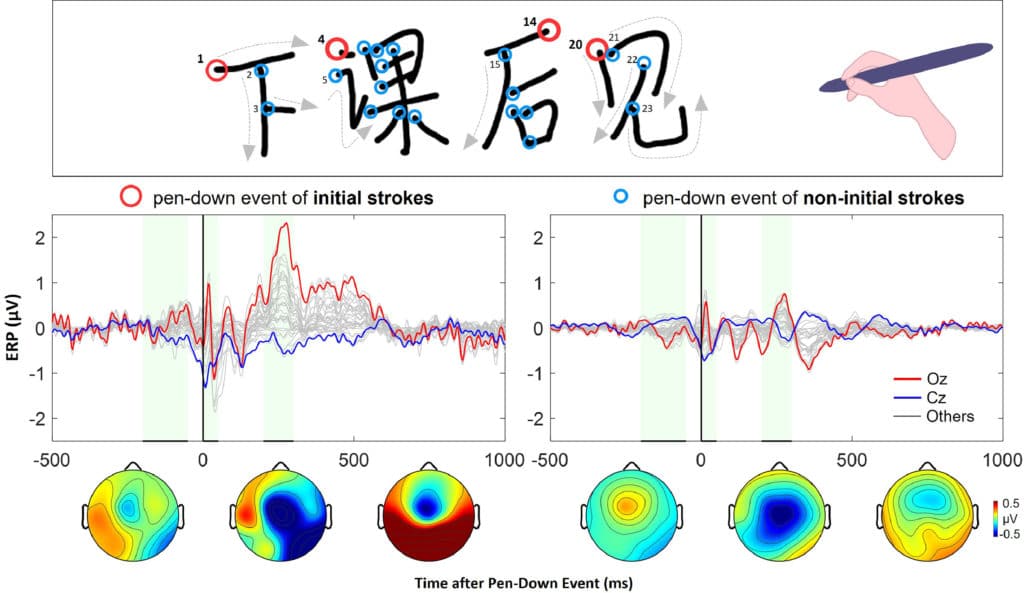
EEG time-courses were co-registered with handwriting movements produced on a tablet (top). When participants write words to dictation, a structured and reliable pattern of neural activation is associated with each writing stroke (bottom). The rhythm of handwriting is synchronised to the phase of theta brain oscillations, with a stronger synchronisation when participants write with their dominant vs. non-dominant hand, or in their L1 (Chinese) vs. their L2 (English). This theta entrainment may play a fundamental role in the efficient coordination and monitoring of skillful handwriting.
